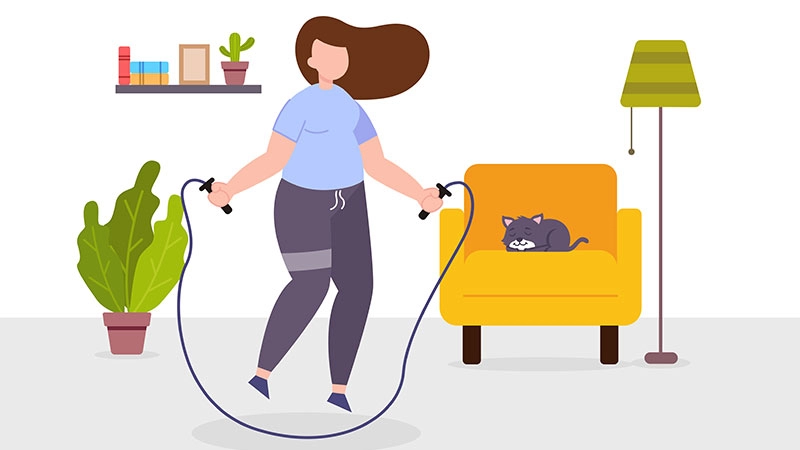Understanding the Pelvic Floor and Its Importance for Health
The pelvic floor is a group of muscles and connective tissues that form a supportive hammock at the base of your pelvis. These muscles wrap around the bladder, uterus (in women), rectum, and help control important bodily functions.
Anatomy and Functions of Pelvic Floor Muscles
The pelvic floor muscles play several vital roles, including:
- Supporting pelvic organs like the bladder, uterus, and bowel
- Controlling bladder and bowel movements by contracting and relaxing
- Stabilizing the core alongside your abdominal and back muscles
- Enhancing sexual function by improving sensation and muscle control
These muscles work constantly, even when at rest, to maintain pelvic health and prevent issues like incontinence or pelvic organ prolapse.
Common Reasons for Pelvic Floor Weakness
Pelvic floor muscles can weaken for various reasons, impacting overall pelvic health. Common causes include:
- Pregnancy and childbirth: The stretching and pressure from pregnancy can strain pelvic muscles
- Aging and hormonal changes: Decreased estrogen after menopause affects muscle strength
- Heavy lifting or high-impact exercise: Can place excess stress on pelvic tissues
- Obesity and chronic coughing: Both increase pressure inside the abdomen and pelvis
- Pelvic surgery or injury: May damage muscle or nerve function
Weak pelvic floor muscles often contribute to urinary or fecal incontinence, pelvic pain, and reduced quality of life affecting confidence and daily activities.
Why Pelvic Floor Strength Matters
Maintaining strong pelvic floor muscles is essential for overall health and well-being. Here’s why:
- Improved bladder and bowel control reduces embarrassing leaks
- Better core stability supports posture and reduces back pain
- Enhanced sexual health boosts intimacy and satisfaction
- Prevention of pelvic organ prolapse, which can cause discomfort and require surgery
Focusing on pelvic floor strengthening exercises helps protect against common problems that come with pregnancy, aging, or pelvic floor dysfunction. It empowers you to stay active, confident, and comfortable in your daily life.
If you want to learn more about pelvic floor health and how exercise choices impact it, explore our in-depth resources on pelvic floor support and exercise recommendations here.
Skipping Rope Overview of the Exercise and Benefits for Pelvic Floor Health

Skipping rope is a simple yet powerful cardio workout that involves jumping repeatedly over a swinging rope. It’s accessible, requires minimal equipment, and can be done almost anywhere. Many people use it to build cardio endurance, improve coordination, and boost overall fitness.
What Skipping Rope Does for Your Body
When you skip rope, several muscle groups get activated. The exercise primarily works your:
- Calves and lower legs for the bouncing motion
- Core muscles to maintain balance and posture
- Arms and shoulders to keep the rope turning smoothly
- Glutes and thighs to stabilize during jumps and landings
This full-body engagement makes skipping rope a well-rounded workout that also promotes cardiovascular health and coordination.
Skipping Rope and Pelvic Floor Muscles
While skipping rope is excellent for overall muscle tone and endurance, it also indirectly involves the pelvic floor muscles. These muscles play a critical role in supporting pelvic organs and stabilizing the core during impact activities like jumping. The rhythmic bouncing places mild loads that, when done correctly and safely, can help stimulate pelvic floor strength.
In short, skipping rope isn’t just about cardio—it activates muscles that contribute to pelvic floor health, especially when combined with targeted pelvic floor strengthening exercises.
Can Skipping Rope Strengthen the Pelvic Floor Impact and Benefits
Does Skipping Rope Engage the Pelvic Floor Muscles
Skipping rope is a high-impact cardio exercise that mainly targets your legs, calves, and core muscles. But what about the pelvic floor muscles? These muscles act like a hammock supporting your bladder, uterus, and bowel. When you jump, your pelvic floor naturally contracts to help stabilize your hips and absorb the impact. This means skipping rope does involve pelvic floor muscle engagement, though it’s usually indirect.
Scientific Evidence and Expert Opinions
Research on skipping rope directly strengthening the pelvic floor is limited. Most studies focus on pelvic floor strengthening exercises like Kegels, Pilates, or yoga for better results. However, some experts agree that the impact forces from jumping provide a mild workout to pelvic floor muscles by forcing them to contract and support your internal organs.
Still, these forces must be balanced carefully. Too much repetitive jumping could cause strain or even worsen existing pelvic floor issues, especially for people with pelvic floor dysfunction.
Positive Strengthening Versus Risk of Strain
- Positive Effects: Moderate skipping can help build pelvic floor endurance and coordination as these muscles work with your core during each jump.
- Risks: High-impact skipping, especially without proper technique or pelvic floor conditioning, may overstress weak pelvic muscles, leading to discomfort, leaks, or prolapse risks.
Who Should Benefit and Who Should Be Cautious
- Beneficiaries: Generally healthy women, especially those who already maintain some pelvic floor strength, might see added benefits from skipping rope combined with targeted pelvic floor work.
- Be Cautious:
- Postpartum women should wait until cleared by a healthcare provider, as their pelvic floor is still healing and vulnerable.
- Women with diagnosed pelvic floor dysfunction, prolapse, or incontinence should avoid high-impact jumping until their condition improves or they get medical advice.
Bottom Line
Skipping rope can engage pelvic floor muscles and offer mild strengthening when done right, but it’s best viewed as a complementary cardio workout rather than a standalone pelvic floor exercise. If you have concerns or symptoms, pair skipping with pelvic floor strengthening exercises like Kegels and consult your doctor or pelvic health specialist for safety.
How to Skip Rope Safely for Pelvic Floor Health

Skipping rope can be a great cardio workout, but it’s important to protect your pelvic floor while doing it. Here’s how to get the most benefits without risking pelvic strain or injury.
Proper Technique and Posture to Minimize Pelvic Strain
- Keep your core engaged: Tighten your abdominal muscles to support your pelvis and reduce pressure on the pelvic floor.
- Land softly: Use the balls of your feet to absorb impact. Avoid heavy, hard landings that can increase pelvic floor strain.
- Maintain good posture: Stand tall with your shoulders back and knees slightly bent. Avoid locking your knees or leaning forward.
- Control your jump height: Small, controlled jumps are better than large, high leaps. This reduces impact and lowers stress on pelvic muscles.
Recommended Duration and Frequency for Pelvic Benefits
- Start slow: Begin with 1–2 minutes per session and gradually increase as your strength improves.
- Aim for consistency: 3 to 4 sessions per week is ideal for building endurance and pelvic floor strength without overloading your muscles.
- Listen to your body: If you feel pelvic discomfort or heaviness, reduce session length or intensity.
Combining Skipping Rope with Pelvic Floor Specific Exercises
Skipping rope alone isn’t enough to fully strengthen your pelvic floor. Pair it with targeted exercises like:
- Kegels: Contract and hold your pelvic floor muscles regularly to build control and endurance.
- Pilates or yoga poses: Many moves support pelvic alignment and activate deep pelvic muscles.
- Low impact cardio: Swimming or walking can complement skipping rope without adding extra pelvic stress.
Signs to Watch for If Skipping Rope Worsens Pelvic Floor Symptoms
Be alert to any warning signs that your pelvic floor may be struggling:
- Urine leakage or urgency during or after skipping
- Pelvic heaviness or pressure
- New or increased pelvic pain
- Discomfort or bulging in the vaginal or rectal area
If you notice these symptoms, stop skipping rope and consult a pelvic health specialist before continuing. They can help tailor exercises to your condition and recommend safer pelvic floor strengthening routines.
By focusing on proper jumping technique, pacing your workouts responsibly, and combining skipping rope with pelvic floor specific exercises, you can enjoy the cardio benefits without risking pelvic health. Always prioritize safety to support long-term pelvic floor strength and overall wellness.
Alternative Exercises to Strengthen the Pelvic Floor
If you’re looking beyond skipping rope for pelvic floor strengthening exercises, there are several effective options to consider. These alternatives focus directly on the pelvic muscles and provide low-impact ways to build strength safely.
Kegel Exercises How and Why
Kegels are probably the most well-known pelvic floor exercise. They involve consciously contracting and relaxing the pelvic floor muscles.
- Why Kegels work: They target the exact muscles that support the bladder, uterus, and bowel, helping improve control and reduce the risk of prolapse.
- How to do them: Squeeze the muscles you’d use to stop urinating, hold for 5 seconds, then release for 5 seconds. Repeat 10–15 times, multiple times a day.
- Benefits: Helps restore strength gently, making it ideal post-pregnancy or for those with pelvic floor dysfunction.
Pilates and Yoga Poses Targeting Pelvic Floor
Pilates and yoga incorporate movements that engage and balance the pelvic floor within the core, making them excellent for overall pelvic health.
- Pilates focus: Emphasizes core control and alignment, including exercises like pelvic tilts and bridges that activate pelvic floor muscles.
- Yoga poses: Certain poses like Bridge Pose, Malasana (Garland Pose), and Happy Baby Pose gently stretch and engage the pelvic floor.
- These forms of exercise improve flexibility while promoting pelvic floor strength and circulation without high impact.
Low Impact Cardio Alternatives
For those who find jumping activities like skipping rope too intense or risky for their pelvic floor, low-impact cardio is a solid choice.
- Options include: brisk walking, swimming, cycling, and elliptical training.
- Why low impact helps: These activities increase heart rate and endurance without bouncing forces that may strain weak pelvic muscles.
- Incorporating low-impact cardio supports overall fitness while keeping pelvic floor stress minimal.
Combining these exercises with skipping rope can balance your workout routine. Whether it’s Kegel exercises, Pilates, yoga, or low-impact cardio, the key is to strengthen the pelvic floor safely and effectively, matching your health needs and fitness level.
Why Choosing the Right Skipping Rope Matters for Pelvic Floor Health

Picking the right skipping rope is more important than you might think, especially when you’re focused on pelvic floor strengthening exercises. The quality and design of your jump rope can influence how your body absorbs impact, how comfortable your workout feels, and even how effective your pelvic floor engagement is during skipping.
How Jump Rope Quality Impacts Your Workout and Pelvic Floor
- Shock absorption and material: Low-quality ropes can cause harsh landings that increase the impact on your pelvic floor. This may lead to strain or discomfort, especially if you have preexisting pelvic floor weakness or dysfunction.
- Weight and balance: An ergonomically balanced rope allows smoother rotations, helping maintain proper jumping rhythm and reducing unnecessary stress on your hips and pelvic area.
- Grip and handles: Comfortable, non-slip handles support better posture and control, crucial for keeping pelvic floor muscles engaged without overloading them.
JumpRopeWholesale’s Ergonomic Ropes for Safety and Effectiveness
At JumpRopeWholesale, we focus on manufacturing ropes that blend safety with performance. Our ropes are designed with features that cater to pelvic floor health:
- Lightweight but durable PVC and beaded options for controlled swinging and better impact management.
- Ergonomic handles shaped to fit comfortably in your hands, promoting better posture.
- Adjustable lengths to ensure your rope fits your height perfectly, minimizing extra strain during skipping.
Tips for Selecting the Right Rope for Fitness and Pelvic Health
- Choose ropes with shock-absorbing materials to reduce stress on your pelvic floor during jumps.
- Go for ergonomic handles to maintain a good grip and proper wrist alignment, helping preserve pelvic stability.
- Pick adjustable ropes to avoid awkward jumping angles that can throw off your pelvic alignment.
- Consider lighter ropes for beginners and postpartum women to minimize impact while improving coordination and endurance.
By selecting a high-quality, well-designed jump rope from a trusted supplier like JumpRopeWholesale, you set yourself up for a safer, more effective workout that supports your pelvic floor muscles and cardio routine. This helps you enjoy the many benefits of skipping rope for women without risking unnecessary pelvic floor strain.
Frequently Asked Questions About Skipping Rope and Pelvic Floor Strength
Can Skipping Rope Cause Pelvic Floor Prolapse
Skipping rope itself is unlikely to directly cause pelvic floor prolapse in healthy individuals. However, because skipping is a high-impact exercise involving repetitive jumping, it can increase pressure on the pelvic floor muscles. For those with existing pelvic floor weakness or prolapse risk factors (like postpartum women or individuals with pelvic floor dysfunction), this added impact might worsen symptoms or contribute to strain.
To reduce risk:
- Use proper skipping technique with soft landings
- Avoid excessive jump heights
- Combine with pelvic floor strengthening exercises, such as Kegels
If you have concerns, it’s best to consult a pelvic health professional before starting a jump rope routine.
Is Skipping Rope Recommended After Childbirth
Skipping rope is generally not recommended immediately after childbirth, especially in the early postpartum phase when pelvic floor muscles are still healing. Your body needs time to recover from pregnancy and childbirth stresses, and jumping can put too much strain on weakened muscles.
Most experts suggest waiting until you:
- Have cleared pelvic floor assessments by a healthcare provider
- Can comfortably perform low-impact cardio and pelvic floor strengthening exercises
For many, a gradual reintroduction of skipping rope 8-12 weeks postpartum or later, combined with targeted pelvic floor exercises, can be safe and effective.
How Quickly Can Pelvic Floor Strength Improve With Skipping Rope
If skipping is done safely and combined with pelvic floor strengthening exercises, you may notice improvements in pelvic floor strength within 4 to 6 weeks. Consistency matters, so adding:
- At least 3 sessions per week
- Complementary exercises like Kegels
- Proper form and moderate intensity skipping
will speed progress. Keep in mind that skipping alone doesn’t target pelvic floor muscles specifically; it’s more helpful when paired with dedicated pelvic floor strengthening routines.
What Signs Indicate Skipping Is Harming Pelvic Health
Be aware of these warnings when skipping rope to avoid pelvic floor strain or injury:
- Pelvic pain or heaviness during or after jumping
- Increased urinary urgency, frequency, or leakage
- Feeling of pelvic organ pressure or bulging
- Discomfort when coughing, sneezing, or lifting
- Worsening of existing pelvic floor dysfunction symptoms
If you notice any of these signs, stop skipping and consult a pelvic floor specialist. You may need to modify your workout or focus more on low-impact cardio and pelvic floor rehabilitation.
For those interested in safe, quality jump ropes designed with ergonomic handles and smooth rotation to minimize strain, check out our Freestyle PVC Skipping Rope and other options tailored for your fitness and pelvic health needs.



